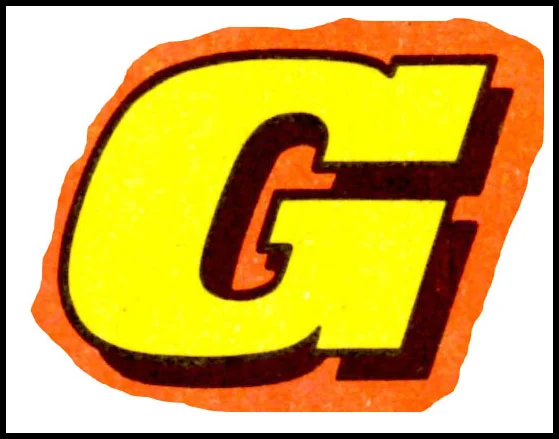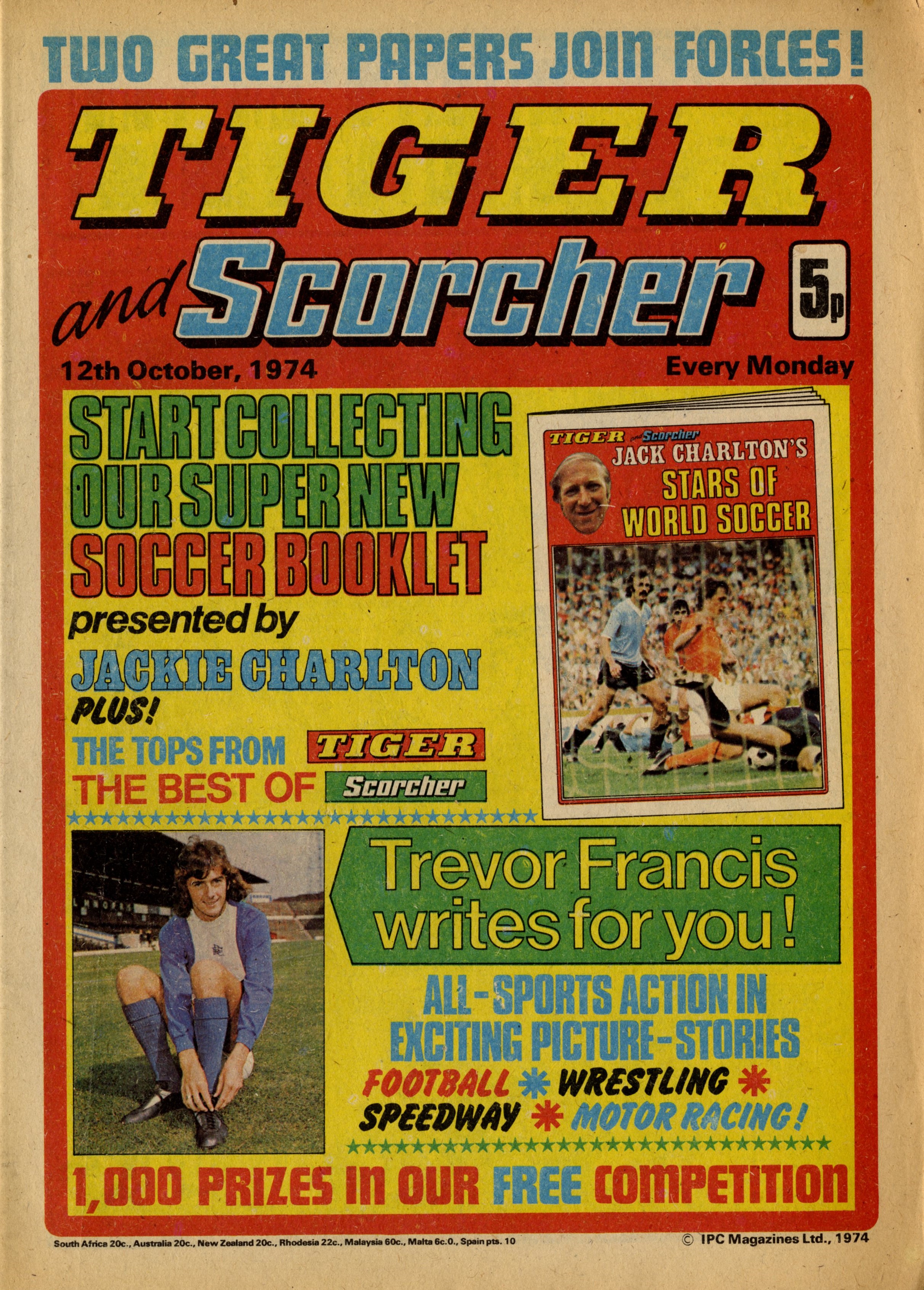On this day, 12 October 1974: Tiger and Scorcher
On this day, 12 October 1974 … I recently read Real Roy of the Rovers Stuff, the football comics memoir of Barrie Tomlinson who was editor of Tiger at the time of its merger with Scorcher and Score. It’s an interesting book – very different in style from Steve MacManus’ The Mighty One – and I plan to write a short review in a future blog post, but I mention it now because today’s merger issue bears all the hallmarks of Barrie’s media-savvy approach to comics publishing. By his own admission, Barrie was always on the lookout for opportunities to place stories about Tiger or Roy of the Rovers in the national press (there’s a whole chapter of his book dedicated to press releases he sent out based on the latest soap-opera developments in Roy’s life), and to draw attention to his titles through link-ups with real-life celebrities. For anyone who knows Doctor Who’s production history, Barrie seems to have had something of a John Nathan-Turner style of commissioning – always on the lookout for content that might lead to a mention for his products in the popular press – and, as was the case for JNT, this was a quality both admired and disapproved of among those he worked with.
So Tiger merged with Scorcher and Score (losing the ‘Score’, just as Score ‘n’ Roar had lost its ‘Roar’ when joining Scorcher three years previously) and, as I mentioned last week, this was a hugely significant development for Tiger as it brought in three strips – Billy’s Boots, Nipper and Hot-shot Hamish – which would become integral parts of the comic’s identity over the coming years (Billy and Hamish remaining until the comic eventually merged into Eagle in 1985, and continuing in the pages of Roy of the Rovers thereafter). But these new properties are barely mentioned on the front cover. In fact, none of the comic’s comic strips are named by their titles. Instead the selling points are considered to be the features ‘written’ by footballing superstars Jack Charlton and Trevor Francis.
This may have been the correct call, I’m not sure. Tiger had a long life and kept much the same format under Barrie’s editorship for many years to come, but nevertheless I find it a bit of a shame. Throughout the 1970s and 1980s both Tiger and Roy of the Rovers alternated between several phases of covers featuring sports photography and comic strips, and as a reader of both titles I always preferred the comics approach. I wonder whether it was felt that the market for children interested in sport was slightly different from that for those interested in adventure, war and science-fiction; that sport comics were based on realism and contemporary activities rather than fantasy or history, and that the genre offered a universe of actual celebrities that it would be a mistake not to exploit. But the impressions I had as a reader was that Tiger and Scorcher would rather have been a football magazine, like Shoot!, than a comic; that it thought of itself as more ‘grown-up’ than the likes of Valiant, or, later, Battle or 2000AD; and (I should be clear that I don’t believe this was Barrie’s intention) that colour photos and ghostwritten articles were regarded as carrying greater value than the talents of such outstanding artists as Yvonne Hutton, David Sque, Julio Schiaffino, James Bleach and John Gillatt.
Roy of the Rovers: Tom Tully (writer), Yvonne Hutton (artist)
Hot-shot Hamish: Fred Baker (writer), Julio Schiaffino (artist)
Johnny Cougar: Barrie Tomlinson (writer), John Gillatt (artist)
Nipper: Tom Tully (writer), artist unknown
Nipper: Tom Tully (writer), artist unknown
Tallon of the Track: James Bleach (artist)
Skid Solo: Fred Baker (writer), John Vernon (artist)
Billy’s Boots: Fred Baker (writer), John Gillatt (artist)
Billy’s Boots: Fred Baker (writer), John Gillatt (artist)
Martin’s Marvellous Mini: Fred Baker (writer), David Sque (artist)




